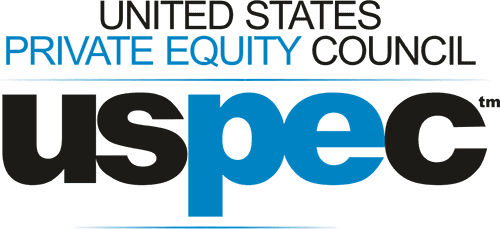Private equity is a viable investment option for those with high net worth, but it is not the only asset class that offers attractive returns. Private equity, venture capital and other options provide higher returns but also come with greater risk. As a result, private equity markets require a high level of risk tolerance and the ability to manage substantial illiquidity. Sometimes, it takes a year to sell private equity investments. 2020 has been an unprecedented year, and the PE industry has felt the impact.
In a survey conducted by S&P Global Market Intelligence among PE and VC professionals globally to gauge industry sentiment for the upcoming months, 56% of survey respondents (up from 52% in 2020) showed intent to target new investment opportunities, while 20% planned to focus on managing existing investments as core investment activities. The survey took over 12 weeks to complete, and was conducted between October 26, 2020, and January 15, 2021. Out of the 477 responses received from global PE and VC investors. 46% of the respondents were professionals at senior levels. Geographically, 35% were from Europe, 24% from North America, 18% from APAC, 13% from the Middle East and Africa, and 11% from Latin America.
Financial Engineering & Its Downside
The leaders of successful businesses establish long-lasting relationships with their customers, suppliers, employees, shareholders, and other stakeholders.
They invest strategically to develop and support their core competencies. They are expected to react quickly to avoid short-term problems from affecting their long-term plans, which has always been the case.
Financial innovation happening 20 years back can easily be described as the clever manipulation of rights over assets. There were many types of bonds being created, like high yield bonds. There were many rights to future assets, including derivatives and hedges. To avoid taxes instruments were designed in a way so that they could be tax-free. Bonds were funded exclusively by asset pools, which included asset-backed debt and CDOs. Credit default swaps were used to transfer credit risk.
Like other technological breakthroughs like cheap computing power, financial engineers could reduce costs and pave the way for developing new products, markets, and services.
This was the heart of the financial revolution in the 1980s, 1990s, and early 2000s. Some of this is still true, but now leaders & shareholders alike have started to look for the expiration date of value-creating tools like Financial Engineering.
Over the last few years, the industry has seen familiar names like Valeant Pharmaceuticals International Inc. and SunEdison Inc. tumble down after engaging in unsustainable financial engineering with the sole purpose of satisfying their shareholders. So, the question is not whether who bore the brunt of the loss, the larger part of the question here is:
Is the practice of engaging in large scale financial engineering sustainable?
The answer is No!
Failure is inevitable when financial engineering is done at the expense of customer focus. High-quality revenue growth is the goal of brand management & is key to sustainable, profitable growth. Companies must simultaneously focus on shareholder and customer value. Leadership that focuses on shareholder value at the expense of customer value is doing no good for the company.
It is time to restore morality to finance and for business leaders to take risks seriously.
Private Equity Portfolios: The Next Frontier
Amid every crisis lies great opportunity , and this is what we believe will drive the PE portfolios to its next frontier.
The PE owners are at the top, driving the improvement of portfolio businesses' performance (in the middle) through operational, strategic or managerial changes. To extract greater value, bolt-on acquisitions are absorbed in portfolio businesses at the bottom.
The traditional approach of having portfolio companies as stand-alone entities & diversifying risks still holds great value in the private equity industry.
However, the next frontier of value creation is designing and managing PE portfolios as a business ecosystem.
This is an approach that is still largely unknown even to top private equity firms. Instead, a PE firm creates a network of relationships among its portfolio companies. It links previously unrelated products and services across industries and helps the companies unlock new value.
For example, two companies could collaborate to procure common services (such as a common logistics partner) to cut costs. The added value that can be derived by leveraging the portfolio in this manner complements vertical values very well. The horizontal links of companies in the portfolio give PE firms new options for increasing their portfolio value, creating new private equity jobs.
Procurement advantages, higher valuation ratings, cost efficiencies, and other downside protection aids in revenue enhancements which in turn creates value for the PE firm. What's more, value-creating relationships that cut across the portfolio can often be maintained after portfolio businesses have been sold so that they can increase the sale price.
This approach would see PE investors create a roadmap of possible links between their businesses and use that to assess potential investments. This new screening process would consider the target's potential and its ability to create new connections.
The vision of each acquisition being a stepping stone towards helping the fund build a virtuous ecosystem that continually increases value without compromising risk or flexibility, and this ambitious vision is very much achievable with this new approach.
Private Equity Investment: Updates & Modernisation
As more capital flows in, the competition in private equity has increased. This has led to higher prices and fewer deals. As a result, the untapped potential is at an all-time high of $2 trillion.
Deal sourcing is often the most crucial stage of a deal cycle to gain a competitive edge. Traditional sourcing is inefficient. Companies close an average of three deals per year out of the thousands they review. Private equity firms must improve their deal-closing rates to stay competitive with such a low rate.
Creating business ecosystems in PE investors' portfolios can give them a competitive advantage beyond improving their financial performance.
One is the possibility of gaining a price and sourcing advantage. For Instance, a family-owned company could connect with a PE portfolio firm to help it grow, innovate faster, or protect its market position. A PE firm interested in investing in the family business could get a significant price discount by arguing the partnership would provide more value to the family owner than any other prospect.
Digital tools and data analysis help private equity professionals to optimize their origination processes and gain valuable insights. However, the competitive edge of having a portfolio ecosystem in place can outsmart even the most advanced data analysis and tools available. One such example is in auctions, and PE firms can be more competitive than their rivals in bidding. They are justified in spending more because they have a unique strategy to maximize investment returns through an ecosystem of portfolio businesses. This ecosystem approach can be combined with higher financial leverage to increase a PE firm's ability to compete with corporate buyers who are natural builders of synergistic ecosystems.
This value creation system is also a significant source of Alpha (the industry term to describe outperformance). For example, it was found that a 30% increase in revenue growth -- generated through the portfolio ecosystem -- raised the Alpha by 50%. This is based on data from 30 buyouts. In this context, it means outperformance of industry revenue growth.
This system greatly impacts the value created by a PE that exceeds key benchmarks like public equity return.
Conclusion:
By implementing this horizontal thinking, PE firms will emerge as ecosystem orchestrators. They will have to adopt new organizational structures, harmonize systems, new skills, remuneration arrangements, cross-business coordination, and new organizational structures. To maintain a competitive edge, PE innovators who create ecosystems to optimize their portfolios' performance will capitalize on industry returns that are decreasing over time.







